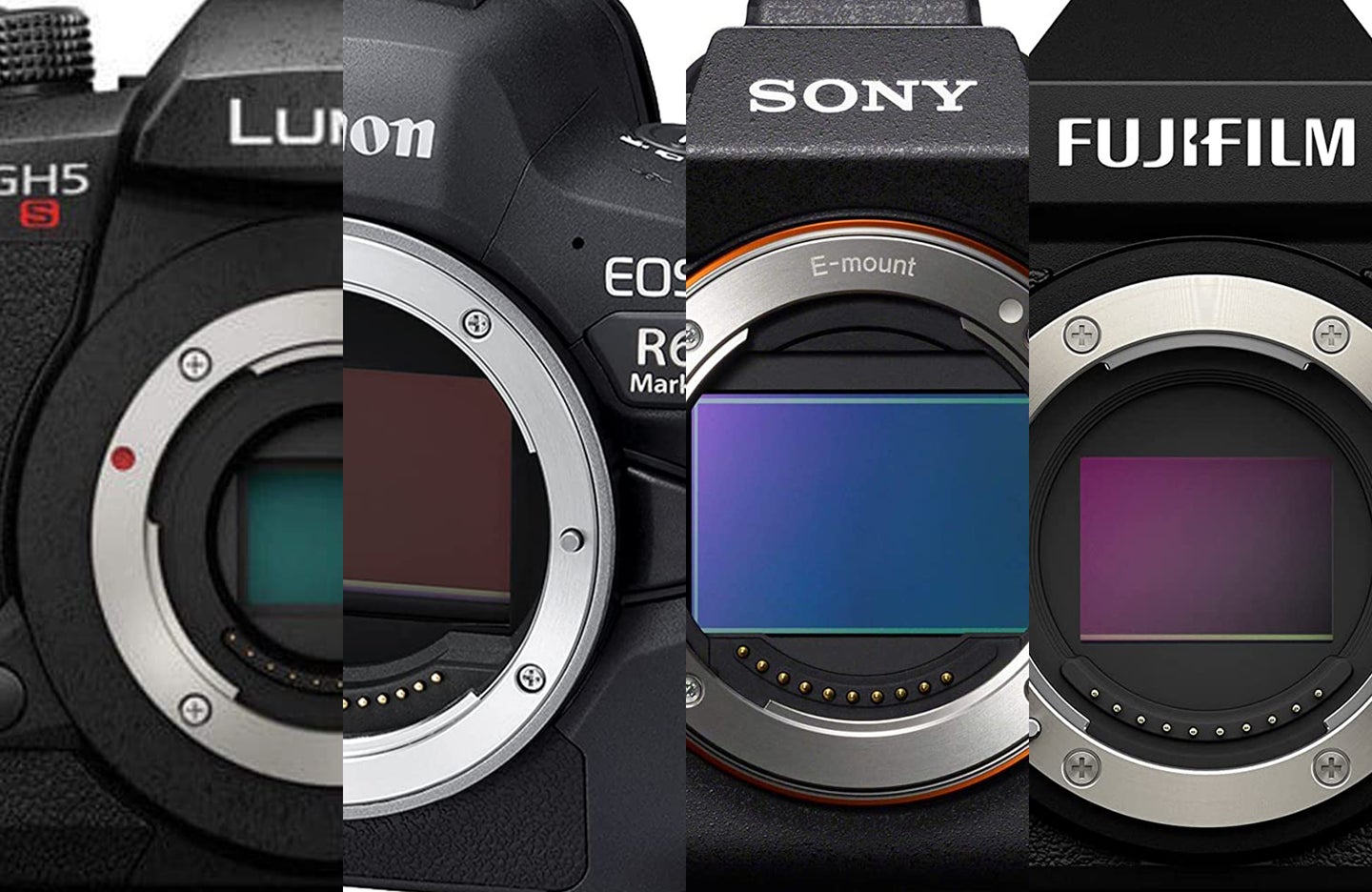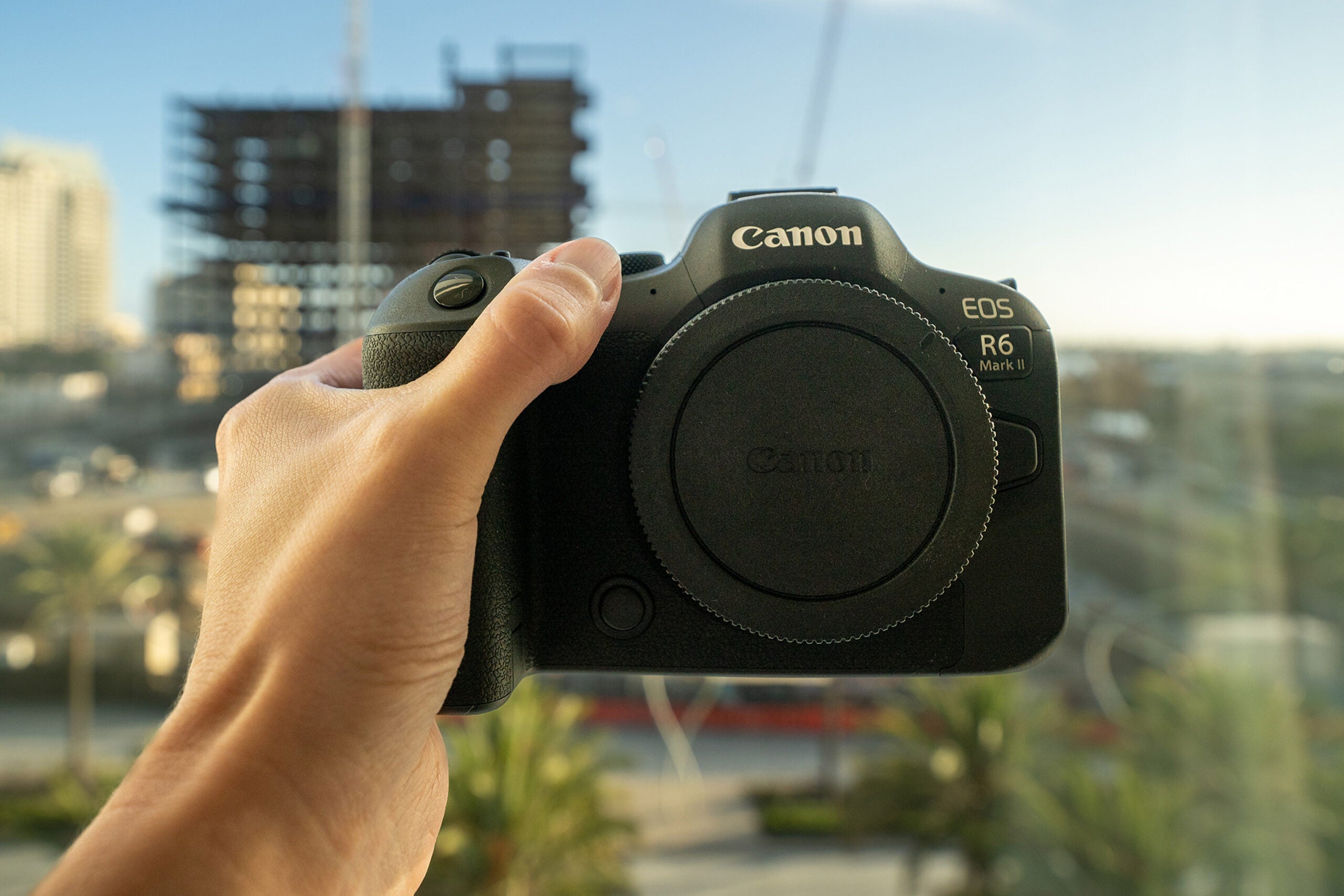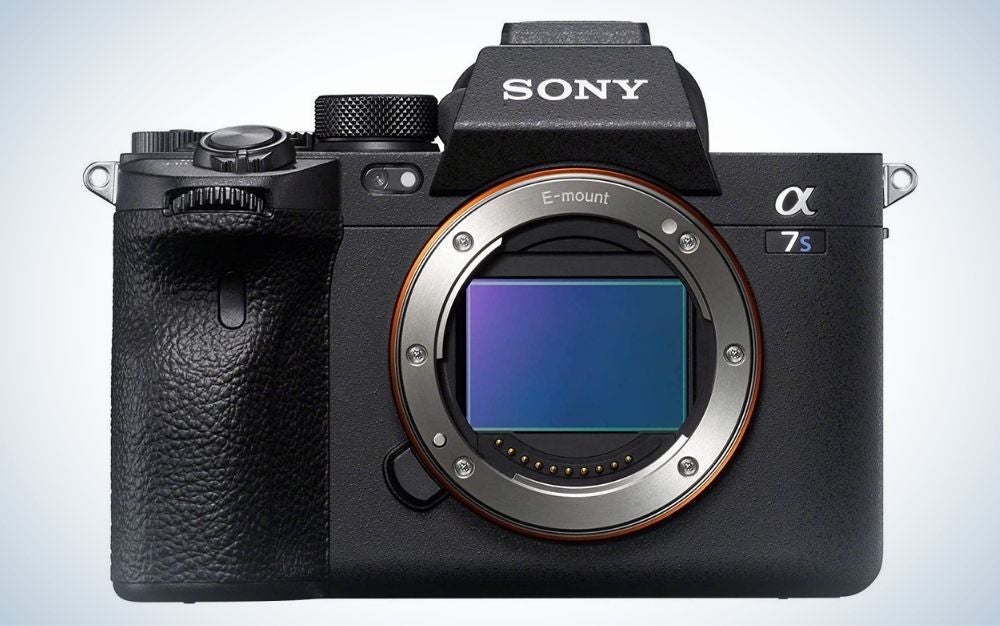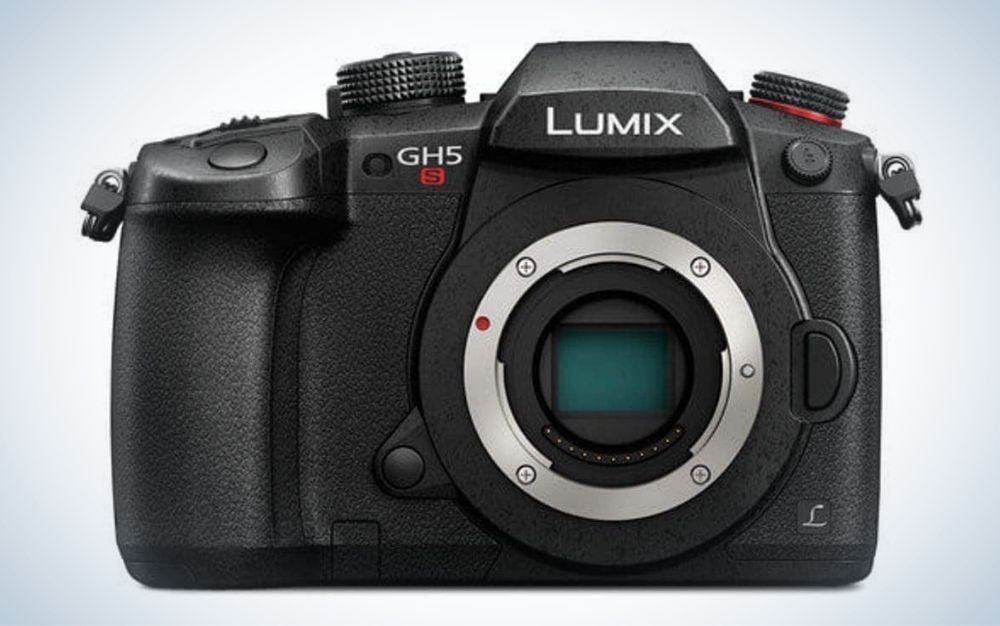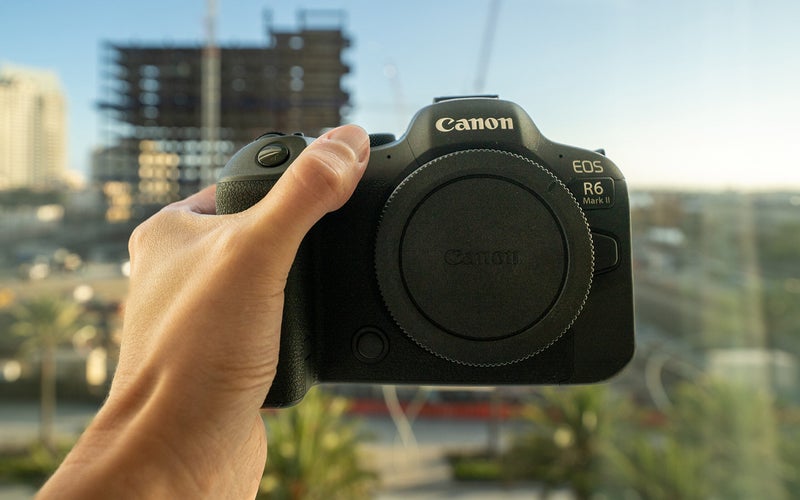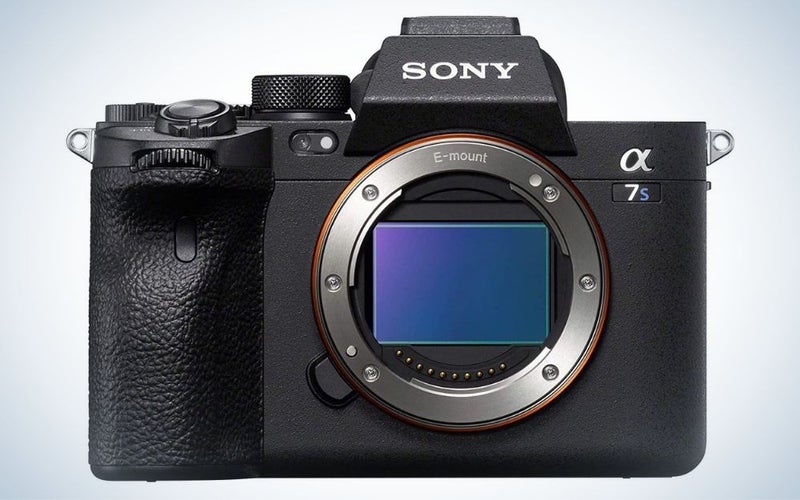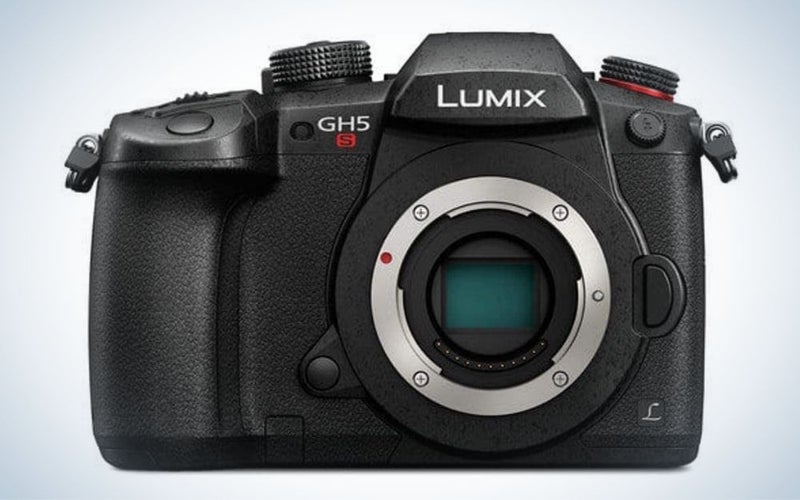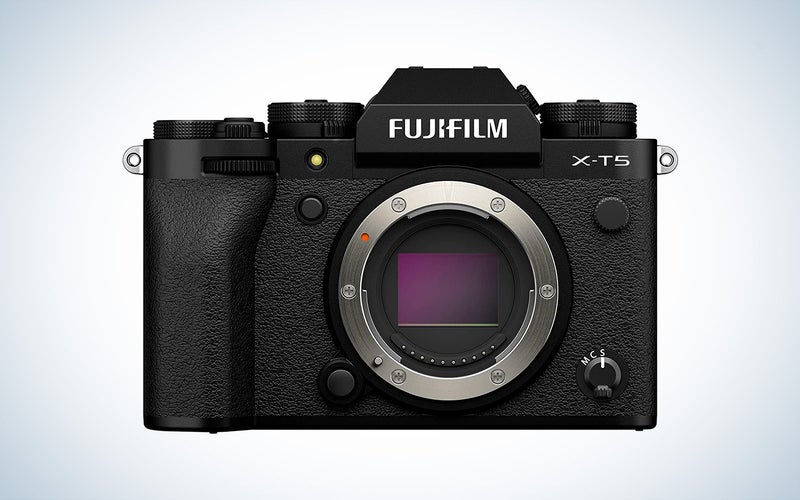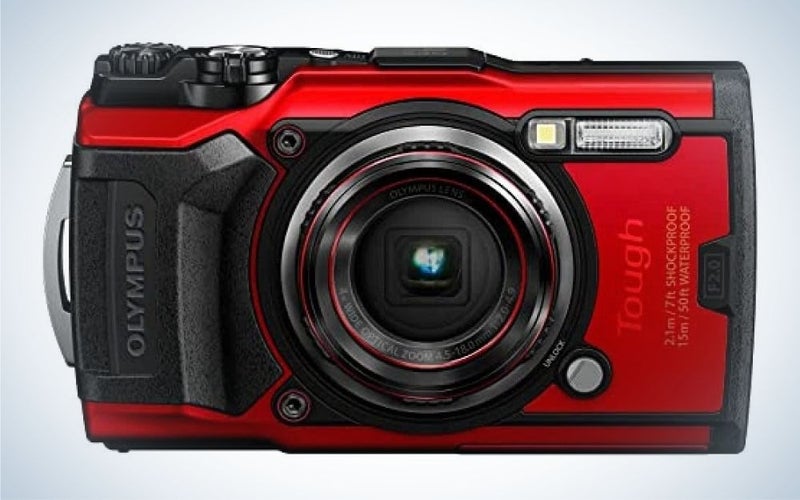We may earn revenue from the products available on this page and participate in affiliate programs. Learn more ›
If you’re looking to take photos or videos in low-light situations, a low-light camera will help ensure that you get quality results despite the tricky conditions. Shooting photos or videos in low-light situations only used to be possible if you owned a high-end professional camera with fast lenses. Luckily, over the last handful of years, as full-frame mirrorless cameras have become the norm and ISO ranges have greatly expanded, the low-light capabilities of smaller, more affordable camera bodies have also increased.
Generally speaking, for a camera to perform well in low-light shooting situations, it will need a large full-frame sensor, an extensive ISO range, and a quality autofocus system. While many of the higher-end low-light cameras in this guide feature full-frame sensors, there are other features to look out for that can make an APS-C sensor or a Micro Four Thirds sensor an acceptable choice for shooting in low-light conditions. Keep reading to learn more about the best low-light cameras for shooting late at night or in dark interiors.
- Best overall: Canon EOS R6 Mark II
- Best for video: Sony A7S III
- Best Micro Four Thirds for video: Panasonic GH5S
- Best APS-C: Fujifilm X-T5
- Best for underwater: Olympus Tough T-G6
How we selected the best low-light cameras
When selecting the best low-light camera in the guide, we considered how you might use them (photo vs. video work) and where you might use them. Although a camera that works well in low light will typically be purchased by an advanced amateur or a professional, we thought it important to include a few cameras that would be considered more budget-friendly for shooters who are just getting started. The cameras we featured in this buying guide were selected through a mix of hands-on experience, user feedback, and editorial reviews.
The best low-light cameras: Reviews & recommendations
Best overall: Canon EOS R6 Mark II
Abby Ferguson
Why It Made The Cut: The -6.5EV autofocus sensitivity, in-body stabilization of seven stops, and well-rounded photo and video features found in the Canon EOS R6 Mark II make this the best low-light option for most photographers.
Specs
- Resolution: 24.2 megapixels
- Sensor size: Full-frame
- Lens mount: Canon RF
- Image stabilization: Sensor-shift, 5-axis
- Memory card slots: Dual slot: SD/SDHC/SDXC (UHS-II)
- Weight: 1.3 pounds
- Dimensions: 5.4 x 3.9 x 3.5 inches
Pros
- Superb autofocus capabilities
- -6.5 EV autofocus sensitivity
- IBIS stabilization combined with lens stabilization
- Large ISO range
Cons
- Unpredictable video recording times
The Canon EOS R6 Mark II is one of the best low-light camera options currently on the market for photographers. Its 24.2-megapixel full-frame sensor paired with -6.5 to +21 EV autofocus sensitivity and seven stops of in-body stabilization make it an excellent tool for shooting in near darkness without a tripod. It also has an impressive ISO range of 100-102,400 that expands to 50-204,800. And noise is very well handled, so even when you are shooting at high ISOs, you will be able to get usable images.
The R6 Mark II has an ultra-high-resolution viewfinder and can shoot up to 40fps continuously with the electronic shutter. Canon addressed many of the video issues in the R6 with this second iteration. It is capable of recording 4K60p for 40 minutes or more, which essentially means there is no longer a heat limitation. And the new Detect Only AF keeps the focus on your subject even if they move behind things, making for smoother videos. It’s an extremely well-rounded camera.
Best for video: Sony A7S III
Sony
Why It Made The Cut: The Sony A7S III is an extremely powerful tool for low-light video shooters thanks to its excellent autofocus, in-body stabilization, and 4K video capabilities.
Specs
- Resolution: 12.1 megapixels
- Sensor size: Full-frame
- Lens mount: Sony E
- Image stabilization: Sensor-shift, 5-axis
- Memory card slots: Dual slot: CFexpress Type A / SD (UHS-II)
- Weight: 1.35 pounds
- Dimensions: 5.07 x 3.81 x 2.74 inches
Pros
- Excellent in low-light
- Large ISO range
- Powerful 4K video capabilities
- 10-bit internal 4:2:2 recording, 16-bit RAW output to external recorder
Cons
- 12-megapixel sensor
- Expensive
Although it only has a 12-megapixel sensor, this camera became a fast favorite of run and gun videographers looking to shoot 4K video. It features 10-bit internal 4:2:2 recording and 16-bit RAW output to an external recorder and can shoot 4K video up to 120fps. It also utilizes Sony’s excellent autofocus system that can perform down to -6 EV, making it a great choice for videographers shooting late at night. Pair this with one of Sony’s excellent G-Master lenses, and you end up with an excellent tool for shooting video in dimly lit scenarios.
Best Micro Four Thirds for video: Panasonic GH5S
Panasonic
Why It Made The Cut: Although it has a modest megapixel count, the Panasonic GH5S has a 4K optimized sensor and dual native ISO, making it a good, lower-cost option for videographers shooting in low-light.
Specs
- Resolution: 10.28 megapixels
- Sensor size: Four Thirds
- Lens mount: Micro Four Thirds
- Image stabilization: None
- Memory card slots:
- Weight: 1.45 pounds
- Dimensions: 5.5 x 3.9 x 3.4 inches
Pros
- 10-bit 4:2:2 recording capabilities
- Captures 4K at 60fps
- Lots of customizable buttons
- -5 AF sensitivity
Cons
- No image stabilization
- Lower 10-megapixel sensor
Although the GH5S has a modest 10-megapixel sensor, this older model remains one of the best Micro Four Thirds cameras for video shooters. The dual native ISO and the 4K optimized sensor make it a solid low-light camera, even in conditions of -5 EV. In addition, it has tons of customizable buttons and a responsive touchscreen for silently controlling the camera while you are rolling. The smaller sensor size found in the GH5S also means that this is a more affordable option than what you might find in a larger full-frame camera.
Best APS-C: Fujifilm X-T5
Fujifilm
Why It Made The Cut: Fujifilm’s X-T5 provides good noise handling with a wide dynamic range, effective image stabilization, and -7 EV autofocus sensitivity, making this APS-C camera excellent in low light.
Specs
- Resolution: 40.2 megapixels
- Sensor size: APS-C
- Lens mount: Fujifilm X
- Image stabilization: Sensor-shift, 5-axis
- Memory card slots: Dual slot: SD/SDHC/SDXC (UHS-II)
- Weight: 1.2 pounds
- Dimensions: 5.1 x 3.6 x 2.5 inches
Pros
- -7 EV autofocus sensitivity
- Excellent dynamic range
- High-resolution sensor
- 7 stops of image stabilization
Cons
- Tracking AF isn’t as strong as the competition
There are advantages to APS-C cameras, even when it comes to low-light shooting. And the Fujifilm X-T5 has a lot to offer in that regard. It offers seven stops of image stabilization to help get sharp images even when using slow shutter speeds. And it provides -7 EV of autofocus sensitivity, so you’ll have fewer issues when trying to focus in dark conditions. The dynamic range is also excellent, meaning you can shoot at lower ISOs and brighten images up without introducing too much noise.
Beyond low-light performance, the X-T5 offers a Pixel Shift Multishot mode, which automatically takes 20 images that can be combined to create a 160-megapixel file. It can record internal video at up to 6.2K at 30p in 4:2:2 10-bit color or oversample the 6.2K footage for superior 4K results. And it can shoot 20 fps with the electronic shutter, making it worthy of fast action.
Best for underwater: Olympus Tough T-G6
OLYMPUS
Why It Made The Cut: Thanks to its optional light guides and flash diffuser accessories, this waterproof camera is one of the best options for low-light shooting underwater.
Specs
- Resolution: 12 megapixels
- Sensor size: 1/2.3-inch
- Lens mount: N/A
- Image stabilization: Sensor-shift
- Memory card slots: Single slot: SD/SDHC/SDXC
- Weight: 8.92 ounces
- Dimensions: 4.45 x 2.6 x 1.28 inches
Pros
- Waterproof, freezeproof, rugged construction
- Compact
- 4K video capture capabilities
Cons
- Small sensor size
- Not great for all-around use
If you love to shoot underwater, you probably already know that the deeper you go, the less light you have to work with. The Olympus TG-6 is waterproof up to 50 feet without waterproof housing and becomes waterproof up to 147 feet with that protective housing. Of course, you will lose a lot of light when you are that far underwater, but thankfully, this niche camera is up to the challenge. A bright LCD screen will help you compose underwater, while optional light guides and flash diffuser accessories will help you keep things nicely lit without disturbing the aquatic scenes below. It supports 4K video, can shoot RAW, and is an incredibly rugged option for shooting low-light images under the sea or in other wet conditions.
Things to consider before buying a low-light camera
The first thing you should ask yourself if you are in the market for a low-light camera is what you will be using it for. The specs that make a camera good for low-light video shooting versus low-light photography can be pretty different, so we’ve compiled our buying guide with these two different shooting scenarios in mind.
Sensor size and megapixel count
Generally speaking, you will want to look for a camera with a large sensor–ideally full-frame–because there is more surface area for light to be gathered on the frame. However, you don’t necessarily need something with a ton of megapixels. If you have no intentions of making huge prints, a large megapixel count won’t give you many advantages. For video shooters, a camera that has a 12-megapixel should be just fine. Photographers who don’t plan on printing large will likely prefer something in the 20-24 megapixel range.
Beyond sensor size, you will also want to keep your eyes out for a particular type of sensor. Backside-illuminated sensors (BSI), also referred to as back-illuminated sensors (BI), are excellent for low-light photography. BSI sensors essentially have the sensor components in reverse order, so more light can hit each pixel, an advantage for low-light photography.
Image stabilization
A camera with a solid image stabilization system is another thing to look for when shopping for a low-light camera. Generally speaking, when you are shooting in near darkness, you are using a much slower shutter speed than if you were working in sunny daytime conditions. A camera with in-body image stabilization will allow you to shoot handheld photos without worrying about camera shake as much.
Lens options
Although having a capable camera body is essential for low-light photography or videography, a low-light camera won’t do much good if you use it with a slow camera lens. For detachable lens cameras, consider pairing them with a fast aperture prime, something like f/1.4, so that you can get as much light hitting the sensor as possible.
Budget
When shopping for a low-light camera, the final thing to keep in mind is your budget. Camera bodies with large sensors will typically be much more expensive than an APS-C or Micro Four Thirds option, so be prepared for that.
FAQs
Q: What makes a camera good in
low light?Generally speaking, a camera that is good for low-light shooting will have a large back-illuminated sensor and a high range of ISO sensitivity. Although these two things are crucial in determining how well a camera will perform in low lighting, the lens that you attach to the camera body will also play a role. If you are planning to shoot a lot of videos or photos in low-light, you will want to pair your camera with a fast aperture lens so that you can let as much light hit the sensor as possible.
Q: Are mirrorless or DSLR cameras better in low light?
DSLRs and mirrorless cameras can both be excellent options for shooting in low-light situations. That said, modern-day mirrorless cameras often have large full-frame sensors and impressive IBIS technology that make handheld shooting in dimly lit conditions much easier than it was in the past.
Q: How do I take sharp photos with low light?
Having a camera with excellent autofocus capabilities and IBIS will help your images remain sharp even if you are shooting handheld at slow shutter speeds somewhere dimly lit. Look for cameras with AF sensitivity that can perform at least at -5EV. You’ll also want a camera with good noise handling at higher ISO ranges, as too much noise reduction will reduce sharpness.
Q: Which ISO is best for low light?
Knowing which ISO is best for low light depends on your particular circumstances and exactly how much light is available. In general, cameras with a more extensive ISO range will generally operate better in dimly lit spaces, but that doesn’t necessarily mean you should be shooting at the highest ISO that your camera has. As you crank the ISO on your camera, the noise within your images will increase. Luckily, most modern cameras are good at reducing digital artifacts at ISOs as high as 10,000.
Q: Is 4K better in low light?
A lot of this will depend on the camera you are using to shoot 4K video. 4K has four times the resolution of 1080p, but pay attention to if the camera you are using is shooting 4K at a crop as many do. Ultimately shooting in true 4K will allow you to capture more details within the frame, but you will need to record to an external recorder for the best results.
Q: Is APS-C good in low light?
An APS-C sensor camera doesn’t have as large of a sensor as a full-frame camera, but it doesn’t mean that there aren’t decent options on the market for low-light shooting. In most cases, an APS-C sensor camera will be a more affordable choice for getting the job done, so as long as it has a good ISO range and, ideally, in-body stabilization, it should work plenty well.
Final thoughts on the best low-light camera
- Best overall: Canon EOS R6 Mark II
- Best for video: Sony A7S III
- Best Micro Four Thirds for video: Panasonic GH5S
- Best APS-C: Fujifilm X-T5
- Best for underwater: Olympus Tough T-G6
Having the right gear for shooting in low-light situations will make a big difference in final image quality. We hope the products in this guide will help you make an informed decision in selecting the right camera for you. Video shooters and photographers have different needs for working in low light, which is why we believe it’s one of the most important things to consider before purchasing a low-light camera.
Why trust us
PopPhoto has a long history of delivering the opinions of some of the sharpest and most prolific camera dorks the world has to offer. Since 1937, we’ve been reviewing cameras, providing wisdom from well-known photographers, and generally just nerding out about all that goes into making great pictures. Our current crop of writers and editors have decades of professional photography and camera writing experience among them. Collectively, we’ve probably shot with just about every camera and lens combo you can imagine—as well as some obscure stuff you may not even know about. Remember the Casio Tryx folding camera? PopPhoto does.
We also get that buying a camera is a big decision, which is why we’re dedicated to helping folks choose the right one (or, in our case “ones”) for their needs. Case in point: Handing over top dollar for an expensive rig may leave you unsatisfied if it doesn’t fit your preferred shooting style. Sure, a $6,000 sports-oriented DSLR can capture landscapes, but do you really need to do it at 30 frames-per-second? No, you don’t.
